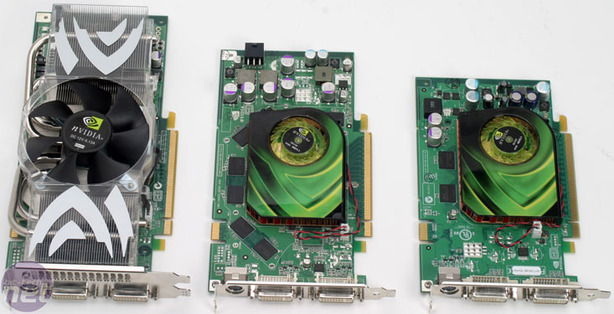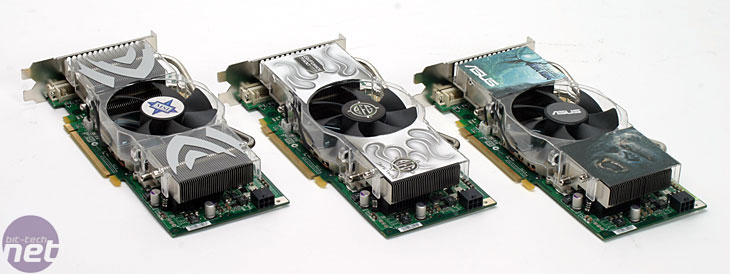Last year was a pretty good year for graphics - in some ways - but it was quite one-sided if you look at things from another angle. NVIDIA managed to successfully hard-launch GeForce 7800 GTX with immediate widespread availability in June, and then continued the trend with GeForce 7800 GT in August. However, the company then tarnished its reputation for hard launches with what it said was a lack of anticipation for the demand of GeForce 7800 GTX 512. We'll beg to differ, but that is the company's final explanation on the subject of GeForce 7800 GTX 512 availability.
Meanwhile, ATI was having problems getting R520 out of the door after soft grounding issues inside the silicon. Eventually it fixed the problems and released the line of products in October, with availability non-existant on launch day. Neither Radeon X1800XL or Radeon X1800XT set the world on fire with their performance. and Radeon X1800XT didn't become available until the beginning of November.
 After the turn of the year, ATI turned a corner with Radeon X1900-series with immediate widespread availability on launch and prices that dropped well below MSRP pretty quickly too. We were impressed with the performance of Radeon X1900XT and Radeon X1900XTX, and the X1900-series CrossFire implementation was the fastest available dual-card solution available when CrossFire Xpress 3200 was released on the 1st March.
After the turn of the year, ATI turned a corner with Radeon X1900-series with immediate widespread availability on launch and prices that dropped well below MSRP pretty quickly too. We were impressed with the performance of Radeon X1900XT and Radeon X1900XTX, and the X1900-series CrossFire implementation was the fastest available dual-card solution available when CrossFire Xpress 3200 was released on the 1st March.
Last Thursday, NVIDIA launched three new video cards, namely GeForce 7900 GTX, 7900 GT and 7600 GT. The three GPUs are manufactured on a 90-nanometre low-k fabrication process and NVIDIA is focusing around the efficiency of the architecture and the physical size of the GPUs.
 Today we're going to cover the performance of three retail GeForce 7900 GTX video cards from ASUS, BFG Tech and MSI. We'll cover the performance of GeForce 7900 GT and GeForce 7600 GT in another article later down the line. Before we do have a look at the three retail cards, we'll have a look at the differences between ATI and NVIDIA's flagship 90 nanometre GPUs, and also the improvements that NVIDIA has made in its transition to 90 nanometres.
Today we're going to cover the performance of three retail GeForce 7900 GTX video cards from ASUS, BFG Tech and MSI. We'll cover the performance of GeForce 7900 GT and GeForce 7600 GT in another article later down the line. Before we do have a look at the three retail cards, we'll have a look at the differences between ATI and NVIDIA's flagship 90 nanometre GPUs, and also the improvements that NVIDIA has made in its transition to 90 nanometres.
Meanwhile, ATI was having problems getting R520 out of the door after soft grounding issues inside the silicon. Eventually it fixed the problems and released the line of products in October, with availability non-existant on launch day. Neither Radeon X1800XL or Radeon X1800XT set the world on fire with their performance. and Radeon X1800XT didn't become available until the beginning of November.

Last Thursday, NVIDIA launched three new video cards, namely GeForce 7900 GTX, 7900 GT and 7600 GT. The three GPUs are manufactured on a 90-nanometre low-k fabrication process and NVIDIA is focusing around the efficiency of the architecture and the physical size of the GPUs.


MSI MPG Velox 100R Chassis Review
October 14 2021 | 15:04






Want to comment? Please log in.